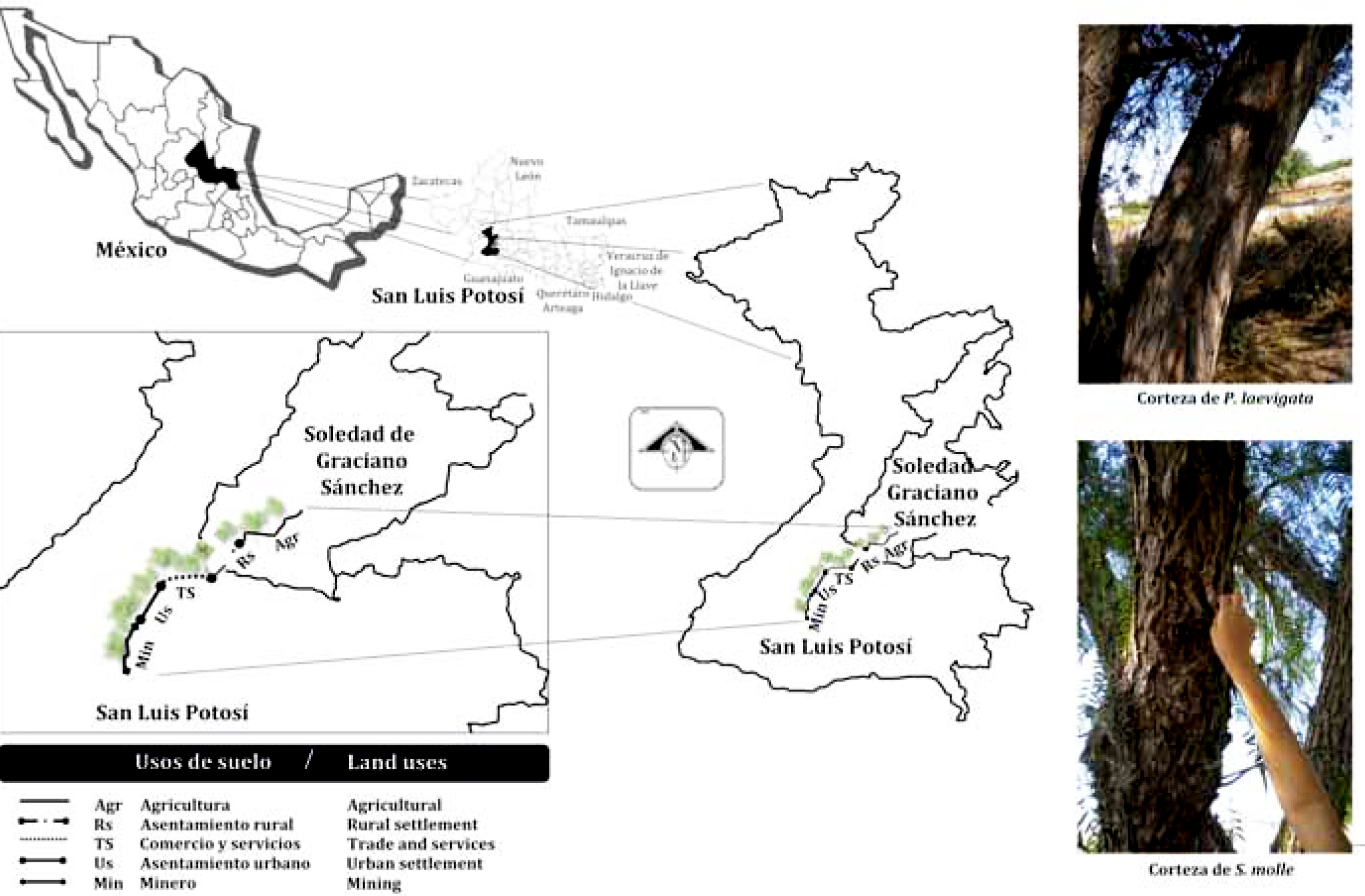Cortezas de Prosopis laevigata (Fabaceae) y Schinus molle (Anacardiaceae) como bioindicadoras de contaminación por metales pesados
Palabras clave:
contaminación, usos de suelo, temporada, impacto ambientalResumen
La corteza arbórea constituye un elemento viable para diagnosticar la contaminación por metales pesados. Fue evaluada la presencia de once metales pesados en corteza de P. laevigata "mezquite" y S. molle "pirul" como indicador de impacto ambiental en San Luis Potosí, México. Basado en la presencia de estas dos especies sobre un sistema fragmentado por usos de suelo agropecuario, asentamiento rural, comercial y servicio, asentamiento urbano y minero, se tomó muestras de corteza durante las estaciones de verano, otoño, invierno y primavera. Se aplicó la técnica ICP-MS y se determinó las concentraciones de Al, As, Co, Cu, Cd, Cr, Ni, Pb, Ti, V y Zn, diseñando un modelo General Lineal para su análisis. Los resultados indicaron concentraciones promedio de Ni>Al>Z n>Pb>Cu>As>Ti>V>Cd>Cr>Co. La presencia de metales pesados fue condicionada por el efecto de la especie, uso de suelo y la temporada, así como la relación entre estos factores. Las cortezas de S. molle resultaron tener mayores concentraciones de Al, As, Co, Cd, Cr, Ni, Pb y Ti. En otoño se presentaron las mayores concentraciones de Al, Cu, Cr, Co y Ni. El uso de suelo para asentamiento urbano presentó las mayores concentraciones de Al,
Co, Cr, Ni, Ti y V y el uso de suelo minero las de Cu, Cd, Zn y Pb. Se demuestra el potencial bioindicador de la corteza de ambas especies. Se sugiere continuar realizando estudios que permitan ampliar el conocimiento de las condiciones ambientales de la zona.
Descargas

Descargas
Publicado
Cómo citar
Número
Sección
Licencia
Aquellos autores/as que tengan publicaciones con esta revista, aceptan las Políticas Editoriales.










.jpg)




